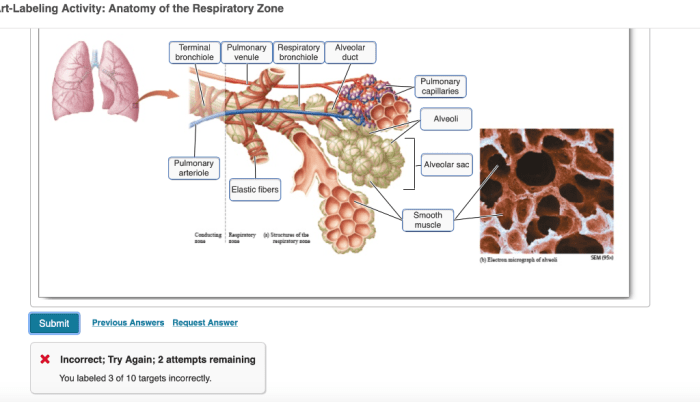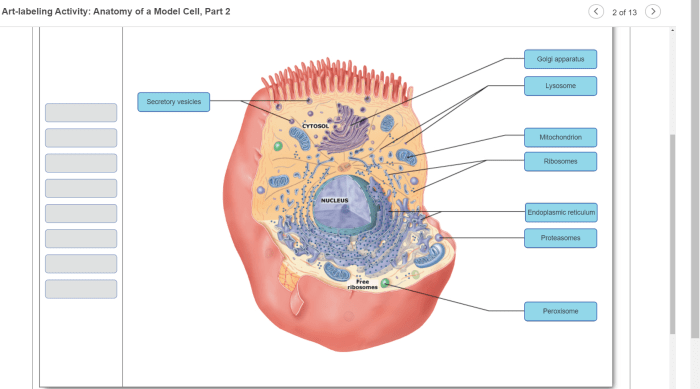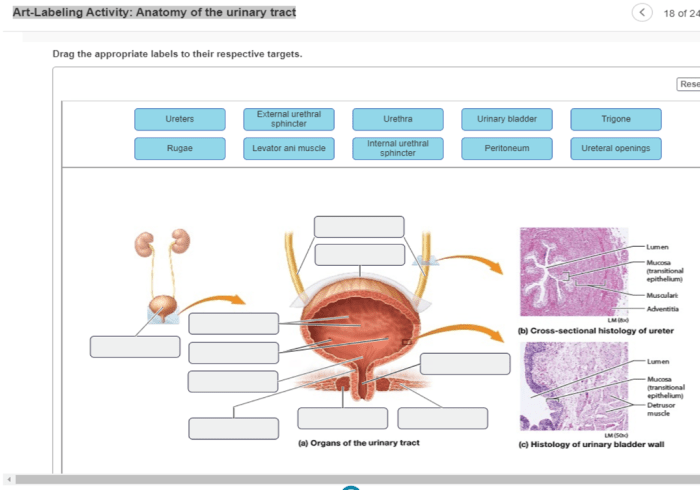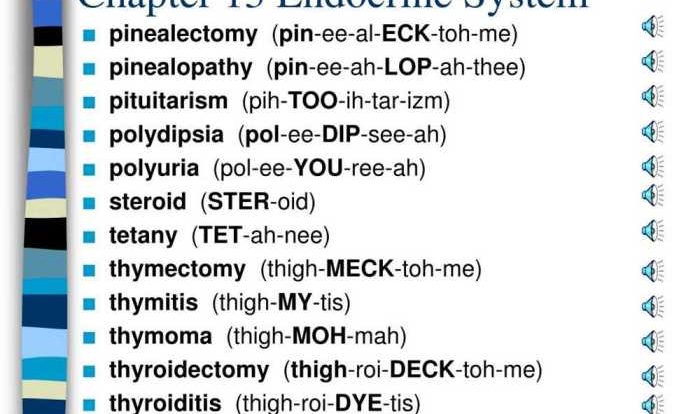The art-labeling activity: anatomy of the respiratory zone invites students to embark on a captivating learning journey, delving into the intricacies of the respiratory system. This activity seamlessly blends art and science, offering a visually engaging and interactive approach to comprehending the structure and function of the respiratory zone.
The respiratory zone, the primary site of gas exchange in the lungs, comprises a network of delicate structures, each playing a vital role in the vital process of respiration. Through this art-labeling activity, students will gain a profound understanding of the anatomy of this essential region, from the alveoli to the respiratory bronchioles and alveolar ducts.
Anatomy of the Respiratory Zone

The respiratory zone is the portion of the respiratory system where gas exchange occurs. It consists of the alveoli, respiratory bronchioles, and alveolar ducts.
Alveoli, Art-labeling activity: anatomy of the respiratory zone
The alveoli are small, thin-walled sacs that form the functional units of the respiratory zone. They are lined with capillaries, which allow for the exchange of gases between the blood and the air. The alveoli are arranged in clusters, with each cluster surrounded by a capillary network.
The size, shape, and arrangement of the alveoli are optimized for gas exchange.
Respiratory Bronchioles and Alveolar Ducts
The respiratory bronchioles are small airways that lead from the bronchi to the alveoli. They are lined with ciliated cells, which help to move mucus and debris out of the lungs. The alveolar ducts are short, narrow airways that connect the respiratory bronchioles to the alveoli.
They are lined with type II pneumocytes, which secrete surfactant, a substance that reduces surface tension in the alveoli and helps to keep them open.
Expert Answers: Art-labeling Activity: Anatomy Of The Respiratory Zone
What is the purpose of the art-labeling activity?
The art-labeling activity aims to provide students with an engaging and interactive way to learn about the anatomy of the respiratory zone, enhancing their understanding of the structures and functions of this vital system.
How does the activity promote student engagement?
The activity combines visual learning with hands-on labeling, capturing students’ attention and fostering a deeper understanding through active participation.
What are the benefits of using high-quality images in the activity?
High-quality images allow students to clearly visualize the structures of the respiratory zone, facilitating accurate labeling and promoting a more profound comprehension of their anatomy.



